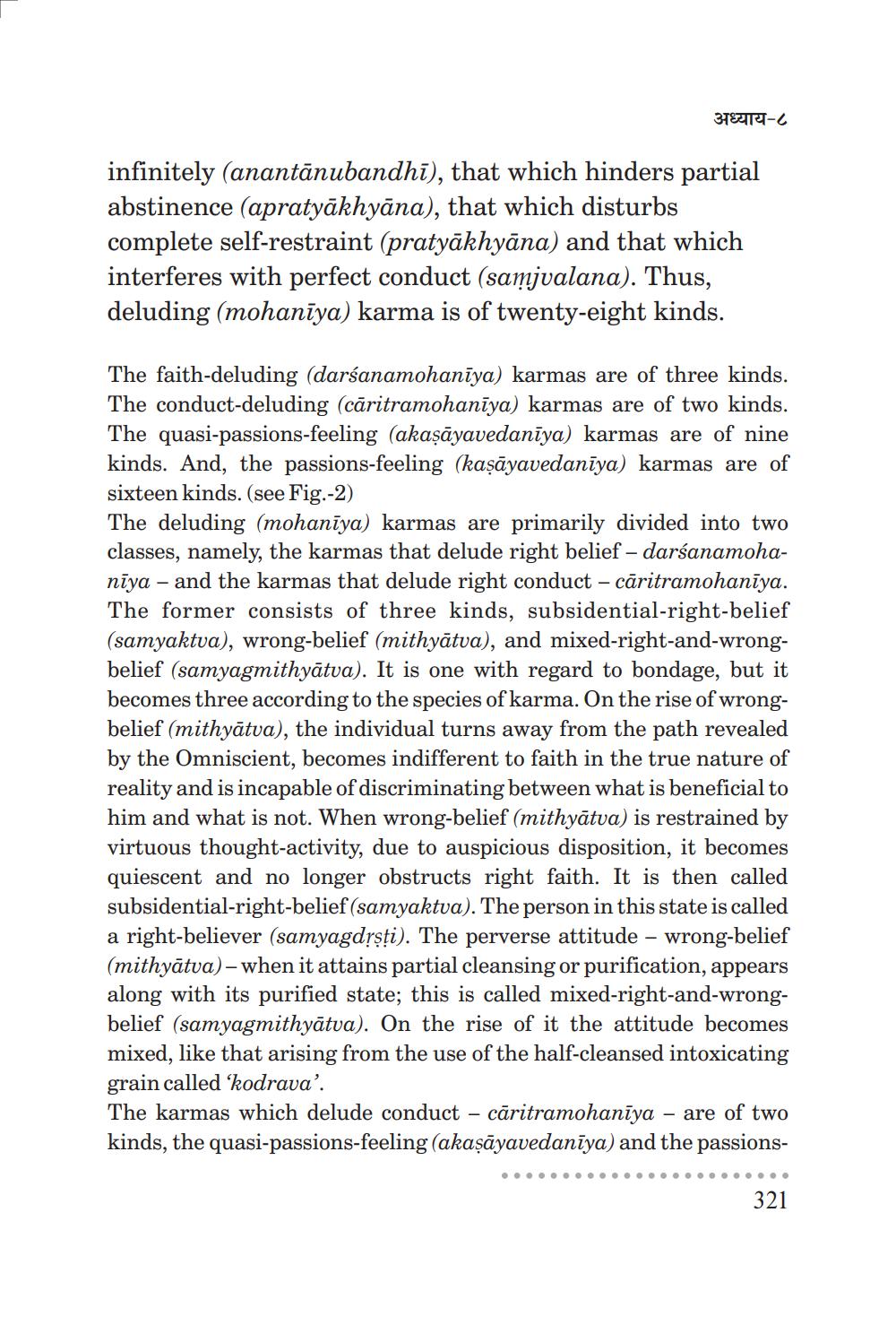________________
अध्याय-८
infinitely (anantānubandhi), that which hinders partial abstinence (apratyākhyāna), that which disturbs complete self-restraint (pratyākhyāna) and that which interferes with perfect conduct (samjualana). Thus, deluding (mohanīya) karma is of twenty-eight kinds.
The faith-deluding (darśanamohanīya) karmas are of three kinds. The conduct-deluding (caritramohanīya) karmas are of two kinds. The quasi-passions-feeling (akaṣāyavedanīya) karmas are of nine kinds. And, the passions-feeling (kaşāyavedanīya) karmas are of sixteen kinds. (see Fig.-2) The deluding (mohanīya) karmas are primarily divided into two classes, namely, the karmas that delude right belief - darśanamohanīya - and the karmas that delude right conduct - caritramohanīya. The former consists of three kinds, subsidential-right-belief (samyaktva), wrong-belief (mithyātva), and mixed-right-and-wrongbelief (samyagmithyātva). It is one with regard to bondage, but it becomes three according to the species of karma. On the rise of wrongbelief (mithyātva), the individual turns away from the path revealed by the Omniscient, becomes indifferent to faith in the true nature of reality and is incapable of discriminating between what is beneficial to him and what is not. When wrong-belief (mithyātva) is restrained by virtuous thought-activity, due to auspicious disposition, it becomes quiescent and no longer obstructs right faith. It is then called subsidential-right-belief (samyaktua). The person in this state is called a right-believer (samyagdrsti). The perverse attitude - wrong-belief (mithyātva)- when it attains partial cleansing or purification, appears along with its purified state; this is called mixed-right-and-wrongbelief (samyagmithyātva). On the rise of it the attitude becomes mixed, like that arising from the use of the half-cleansed intoxicating grain called 'kodrava'. The karmas which delude conduct – cāritramohanīya - are of two kinds, the quasi-passions-feeling (akaṣāyavedanīya) and the passions
.
.
.
.
.
.
.
.
.
.
.
.
.
.
..
.
.
.
.
.
321




